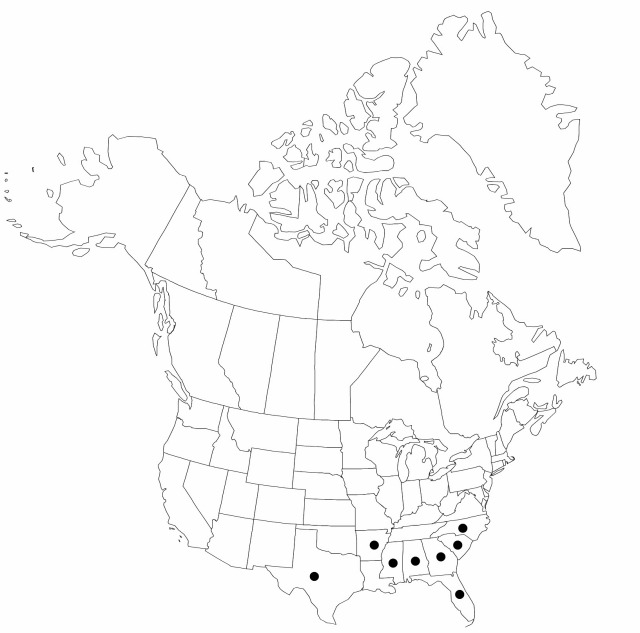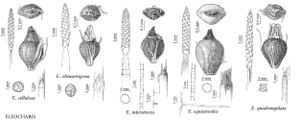Eleocharis cellulosa
Ann. Lyceum Nat. Hist. New York 3: 298. 1836.
Plants perennial; rhizomes 1–4 mm thick, soft to hard, longer internodes 3–7.5 cm, scales 5 mm, tubers absent. Culms terete or obtusely trigonous, 30–80 cm × 1–5 mm, soft to hard, not septate-nodulose, internally spongy, transverse septa incomplete; plants never forming filiform, flaccid culms. Leaves: distal leaf-sheaths persistent, membranous, apex acute to acuminate, often prolonged into a slender awn to 4 mm. Spikelets not proliferous, 14–54 × 3–5.6 mm; rachilla joints without winglike remnants of floral scales; proximal scale empty, amplexicaulous, 2.5–4.9 mm; floral scales 40–180, 2–3 per mm of rachilla, stramineous to pale-brown, flanks sometimes minutely dotted reddish, usually with pale to dark-brown, reddish, or purplish submarginal band, obovate to suborbicular, widest in middle, 3.4–4.5 (–6) × 3–4.8 mm, cartilaginous, membranous toward margins, margins broadly translucent, membranous, apex rounded. Flowers: perianth bristles 6–7, medium brown to pale-brown or reddish, slender, proximally slightly flattened, subequal to unequal, mostly exceeding achene, 2–3.4 mm, smooth or sometimes finely retrorsely spinulose; anthers reddish-brown, 1.7–2.5 mm; styles 3-fid. Achenes brown, biconvex, obpyriform, 2.2–2.8 × 1.3–1.9 mm, markedly sculptured at 10–15X, each face with (17–) 20–24 rows of isodiametric to slightly transversely elongated cells, apex narrowed to a stout, often pale, spongy region 0.8–1.1 mm wide at base, 1/2–3/4 of achene width. Tubercles dark-brown, lamelliform to pyramidal, 0.1–0.5 × 0.2–0.5 mm.
Phenology: Fruiting late spring–winter.
Habitat: Brackish to saline marshes, shores, ditches, mostly coastal, often abundant or dominant
Elevation: 0 (Florida)–600 (Arkansas, Texas) m
Distribution

Ala., Ark., Fla., Ga., Miss., N.C., S.C., Tex., Mexico, West Indies, Central America (Nicaragua)
Discussion
Selected References
None.
Lower Taxa
"shortened" is not a number."thick" is not a number.
